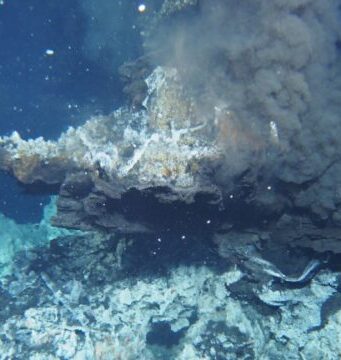In the flooded Hranicka Abyss in Czech Republic, Polish explorer Krzysztof Starnawski examines the limestone crevasse and prepares for a 2016 expedition to measure it depths. Starnawski and his Polish-Czech team discovered that the cave goes 404 metres down,...
Geodynamic modelling relies on knowing the ‘viscosity’ or resistance to changing shape of Earth’s outer layers.Credit: Jiashun Hu, University of Illinois
Scientists have developed a method to estimate weakness in Earth's outer layers which will help explain and predict volcanic...
A new study led by scientists at The Scripps Research Institute (TSRI) offers a twist on a popular theory for how life on Earth began about four billion years ago.
The study questions the "RNA world" hypothesis, a theory for...
Ocean engineers from MIT, the University of Minnesota at Duluth, and the Woods Hole Oceanographic Institution have accurately simulated the motion of internal tides along a shelf break called the Middle Atlantic Bight — a region off the coast...
A new study of lead pollution in the North Atlantic provides strong evidence that leaded petrol emissions have declined over the past few decades.
For the first time in around 40 years, scientists have detected lead from natural sources in...
This map shows all of the tower sites around the world that contributed observations to the FLUXNET 2015 data release. Credit: http://fluxnet.fluxdata.org/
Around the world—from tundra to tropical forests, and a variety of ecosystems in between—environmental researchers have set up...
Wetlands and agriculture, not fossil fuels could be causing a global rise in methane.Credit: Flickr/jalan68
Research published in the American Geophysical Union's journal Global Biogeochemical Cyclesshows that recent rises in levels of methane in our atmosphere is being driven by...
Male amphipod. Credit: University of Adelaide
A common marine crustacean has shown researchers that it’s all set to beat climate change – the males will get more attractive to the females, with a resulting population explosion.
The University of Adelaide study...
An artist’s depiction of an ice-covered planet in a distant solar system resembles what the early Earth might have looked like if a mysterious mix greenhouse gases had not warmed the climate. Credit: European Southern Observatory (ESP)
UC Riverside-led...
This is a composite image of the lunar nearside taken by the Lunar Reconnaissance Orbiter in June 2009, note the presence of dark areas of maria on this side of the moon. Credit: NASA
A layer of iron and...
Oblique view of Rainbow Bridge, Utah.Credit: Jeff Moore
Utah's iconic Rainbow Bridge hums with natural and human-made vibrations, according to a new University of Utah study, published September 21 inGeophysical Research Letters. The study characterizes the different ways the bridge...
















